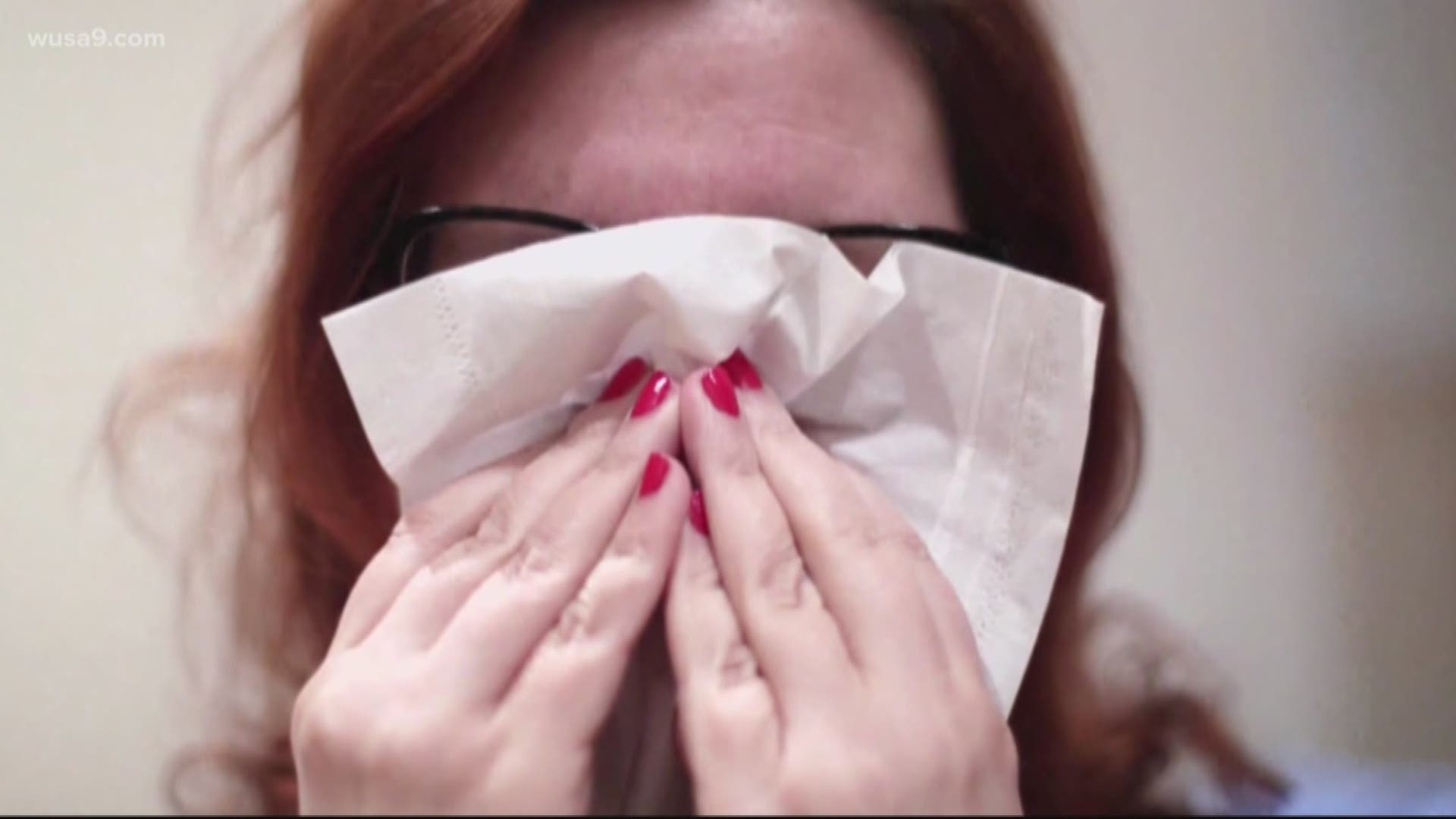WASHINGTON — It seems like there's no escaping them. Your allergies. They attack in the morning. They attack at night. When can you get a break? The answer depends on the type of pollen.
"Generally, it has been accepted that pollen counts tend to rise with the sun, usually in the morning hours, and then reach their peak around midday or early in the afternoon before they start to decrease in the afternoon," said Chief Microbiologist Susan Kosisky of the U.S. Army Centralized Allergen Extract Lab. "Thus, reccomendations have always been to avoid outdoor activities between early morning hours and 10 a.m.," she said.
However, in an analysis, Kosisiky and her team at USACAEL looked at the times of the day when grass and ragweed were highest in Metro D.C.
The analysis found that grass and ragweed pollens can be bothersome both in the morning and at night. That holds especially true for ragweed.
"In Washington, D.C., airborne concentrations of ragweed pollen can remain high throughout the day with peak levels occurring midday into the afternoon hours. Sufficient levels are also recorded overnight into the early morning hours," Kosisky said.
"Concentrations of grass pollen can remain high throughout the day with peak levels occurring during the nighttime and early morning hours. Grass-sensitive patients should be advised that during 'peak' grass season, outdoor exposure to high levels of pollen can occur both day and night," she explained.
Weather and Allergies
There are several factors that may cause pollen levels to be higher or allow pollen to travel further, including temperature, wind, current weather and the type of pollen.
On warm, dry and breezy days, pollen can travel further.
"Levels during the day can depend on how easy pollen becomes airborne and travels from the source. Ragweed pollen traveling considerable distances may arrive at night in some areas," Kosisky explained.
In the evening, the air cools down and pollen sinks back to the ground. Kosisky said it leads to an increase in pollen levels that might cause allergy symptoms to flare up in the evening or the middle of the night.
Depending on what area you live in, pollen levels may take longer to sink back to the ground. In urban and metro areas it takes longer for the air to cool, so the pollen levels may not reach ground level until later in the evening.
In general, metro and urban areas take longer to cool off than rural areas because of an abundance of concrete and buildings that absorb and hold heat longer.
Rain and Thunderstorms - Helpful or Hurtful?
While rain can help wash away pollen levels, thunderstorms may not be as helpful.
While rain may wash out some pollen, research shows that thunderstorms may temporarily make asthma and allergy symptoms worse.
Thunderstorm-triggered asthma – or TA – is an asthma attack that follows a thunderstorm. It is also referred to as thunder fever. People who are most vulnerable to the attacks include those with asthma, and people with allergies, especially to grass.
Thunderstorms may help to break up the larger chunks of grass pollen that are usually too big to inhale. This sends tiny pieces of pollen into the air. The wind from thunderstorms then helps to disperse those pollens.

